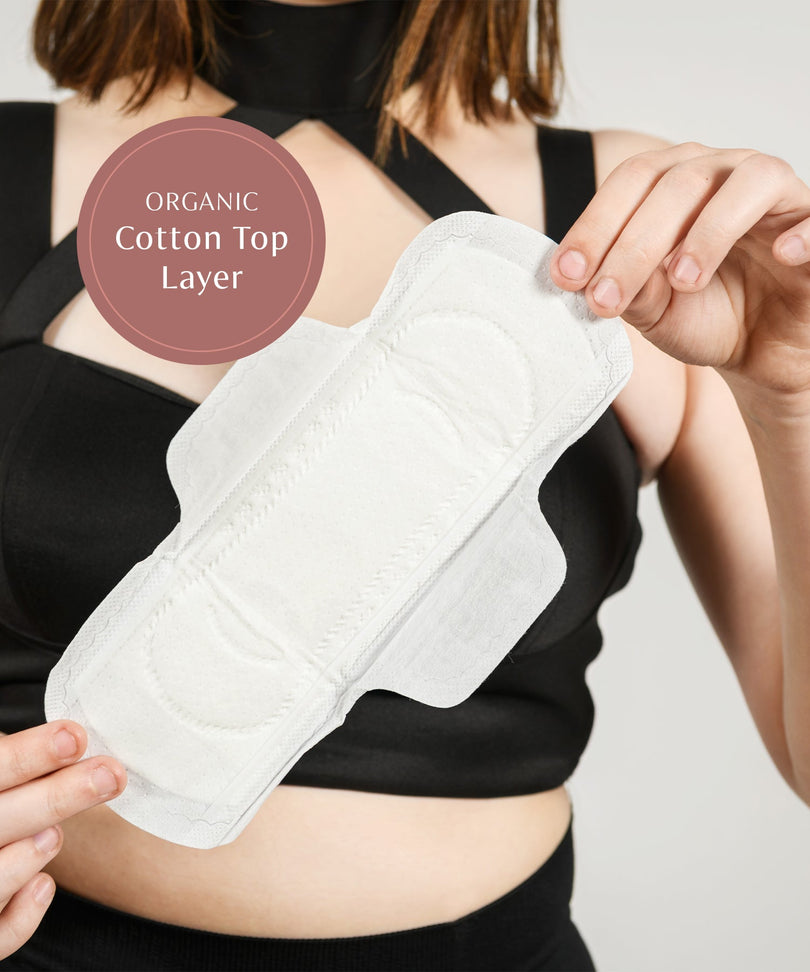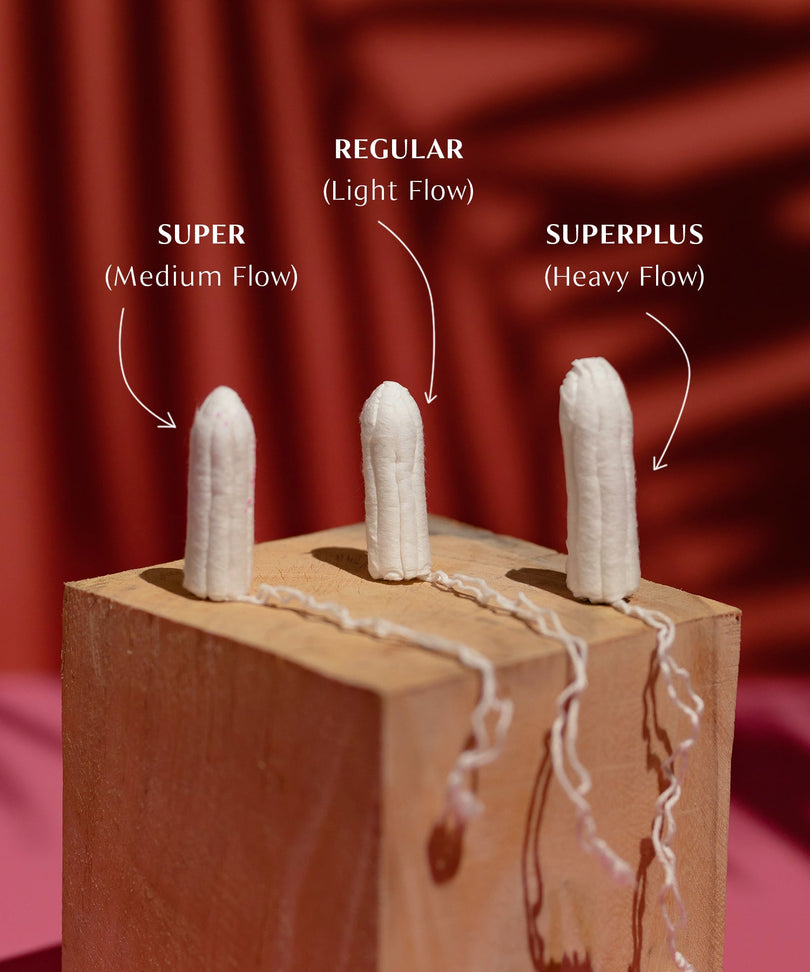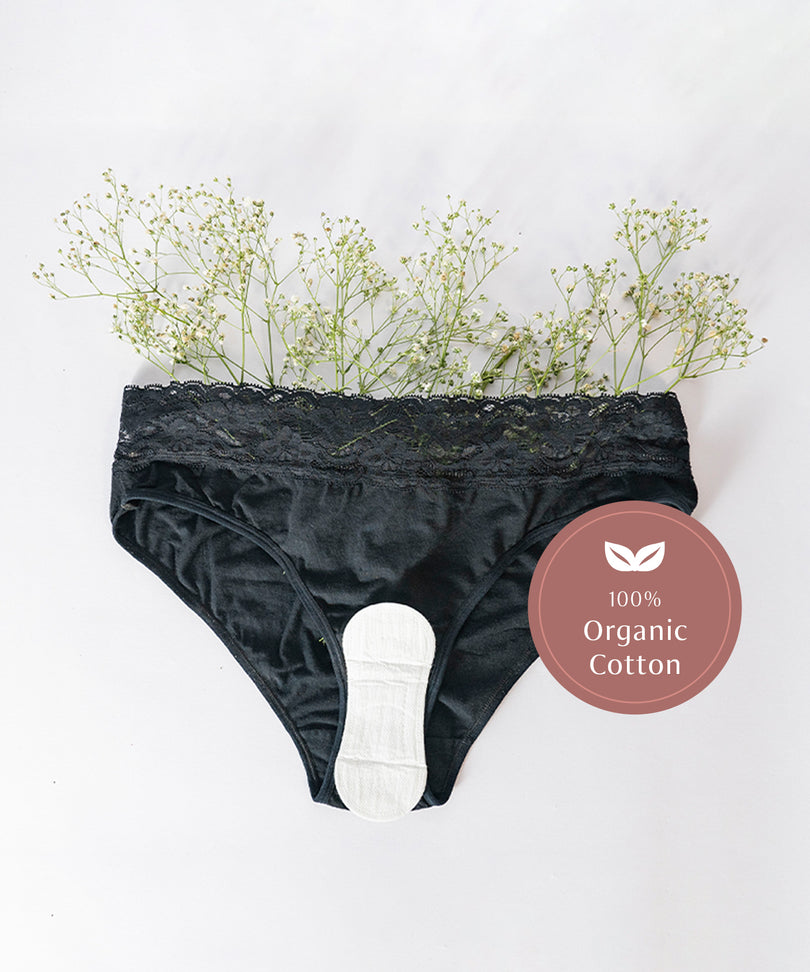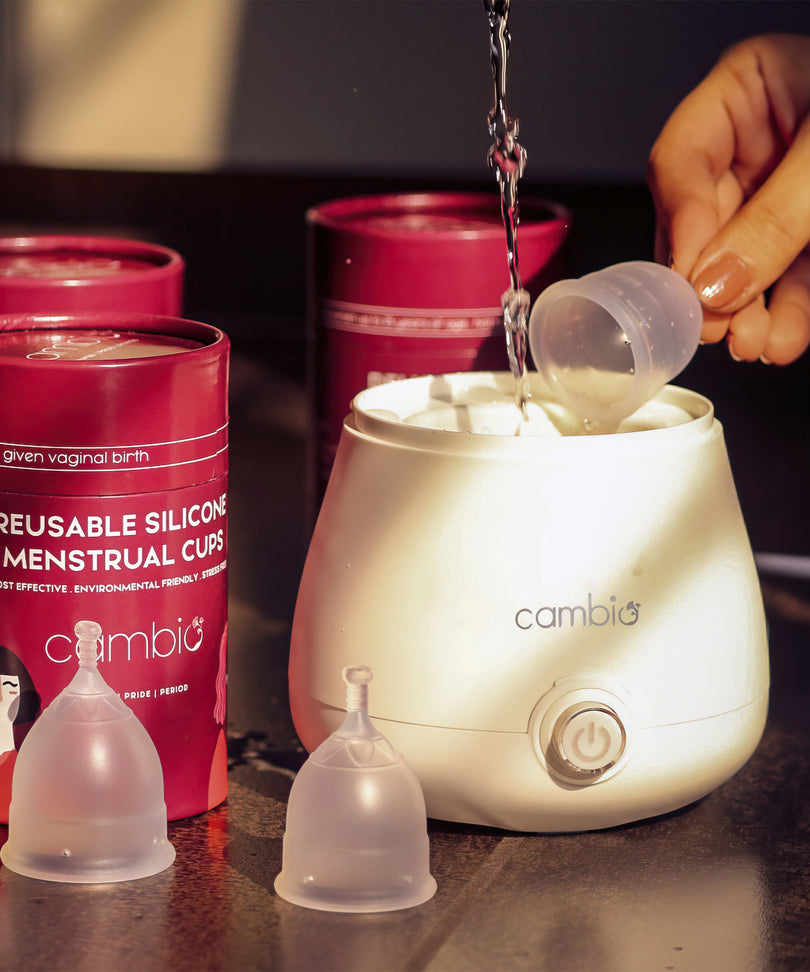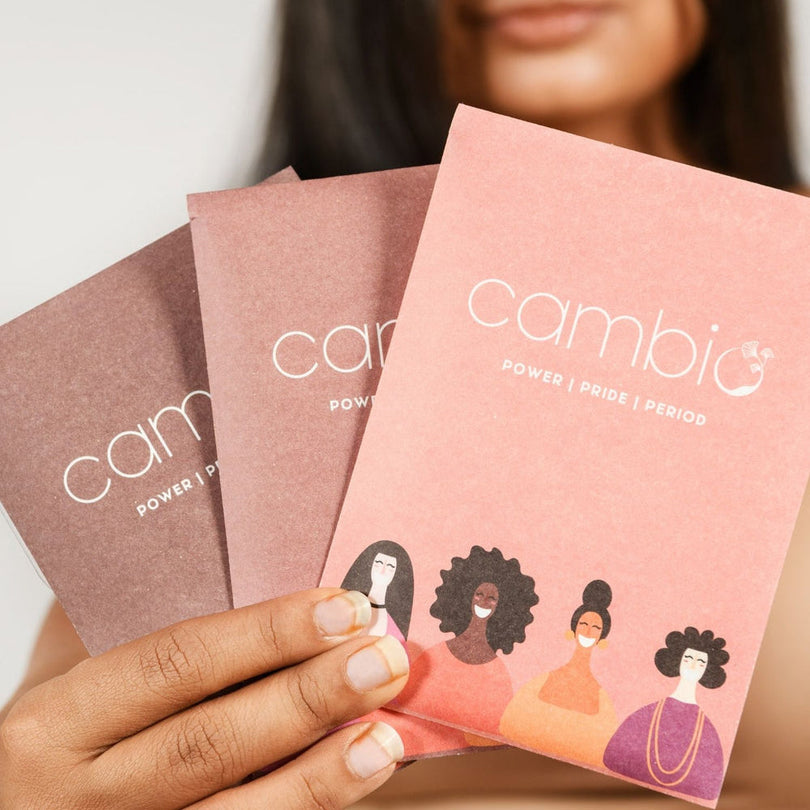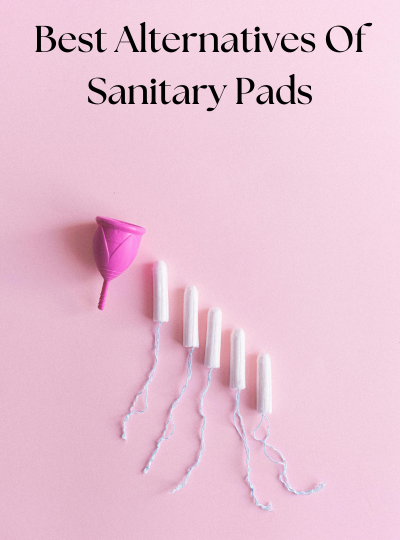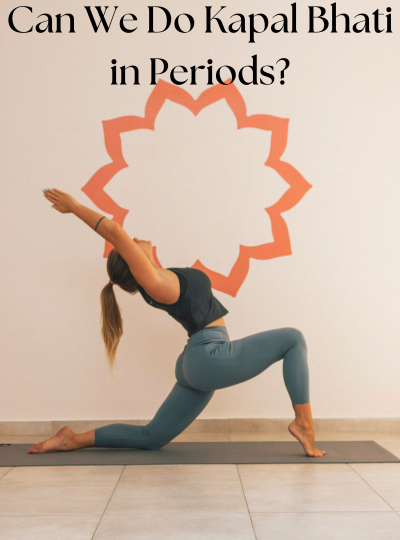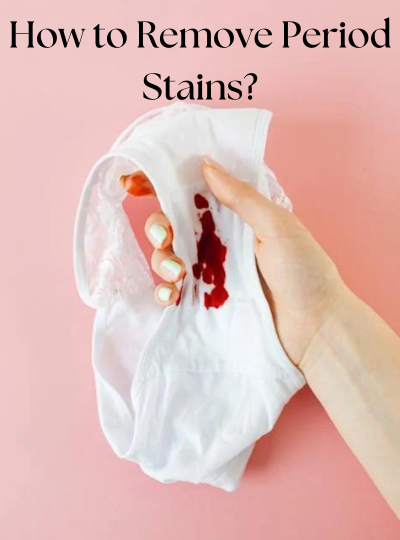Tampons - Alternative of sanitary pads

What are tampons?
A tampon is a soft and absorbent period product made of either cotton or rayon. It is inserted into the vagina to absorb menstrual blood. Tampons either come with applicators or can be inserted using your index finger. The string attached to the edge of the tampon makes it easy to pull out.
Benefits of tampons
- Tampons can be worn when playing sports or even while swimming or in the shower as they are placed inside the vaginal canal.
- Tampons are more discrete under tight clothing compared to pads.
- You can’t feel your tampons when they’re inserted correctly.
Can I use tampons?
- Tampons can be used by anyone on their period, irrespective of sexual activity.
- Women who take part in sports like running or swimming, as well as fashion models who wear tight clothing, tend to prefer tampons over pads.
Pricing compared to sanitary pads
The prices of both tampons and pads vary based on their absorbency and the materials used. Both are similarly priced and there is no significant price gap. Tampons with applicators are more expensive than those without.
How to use a tampon?
Tampons are easy to use once you get the hang of inserting them into your vaginal canal. It’s recommended to follow the set of instructions on the packaging of your tampons.
To use a tampon, first wash your hands. Get into a comfortable position by squatting or sitting on the toilet. Insert the tampon into your vagina using your index finger or the applicators. Applicators are tubes that wrap around the tampon to help insert it into the right position.
The string at the end of the tampon adds ease to the changing process. You can pull out the used by lightly tugging on the string.
Also read - Tampon user guide
Are Tampons better than Sanitary Pads?
Tampons have some advantages over pads such as their discreteness, and secureness during athletic activities. However, they also carry a higher risk of TSS than pads, if left inside for longer than the recommended time of 4-8 hours. This is why it is not recommended to wear the same tampon overnight.
Sanitary pads can be worn overnight and carry almost no risk of TSS.
Availability of Tampons
Tampons are easily available online but may be difficult to find at your local medical store or at a menstrual hygiene vending machine.
We recommend you purchase your tampons online in advance to ensure you have enough for every period.
So, if you’re looking to use tampons regularly, it’s advisable to stock up by purchasing them online well in advance.
Cambio’s Organic Tampons with leak-lock technology is a secure bet for getting all the benefits of tampons without harming the environment as these are made with organic cotton and the applicators are made of cardboard.
Also read - Different tampon sizes
Menstrual Cups - Better alternative of sanitary pads
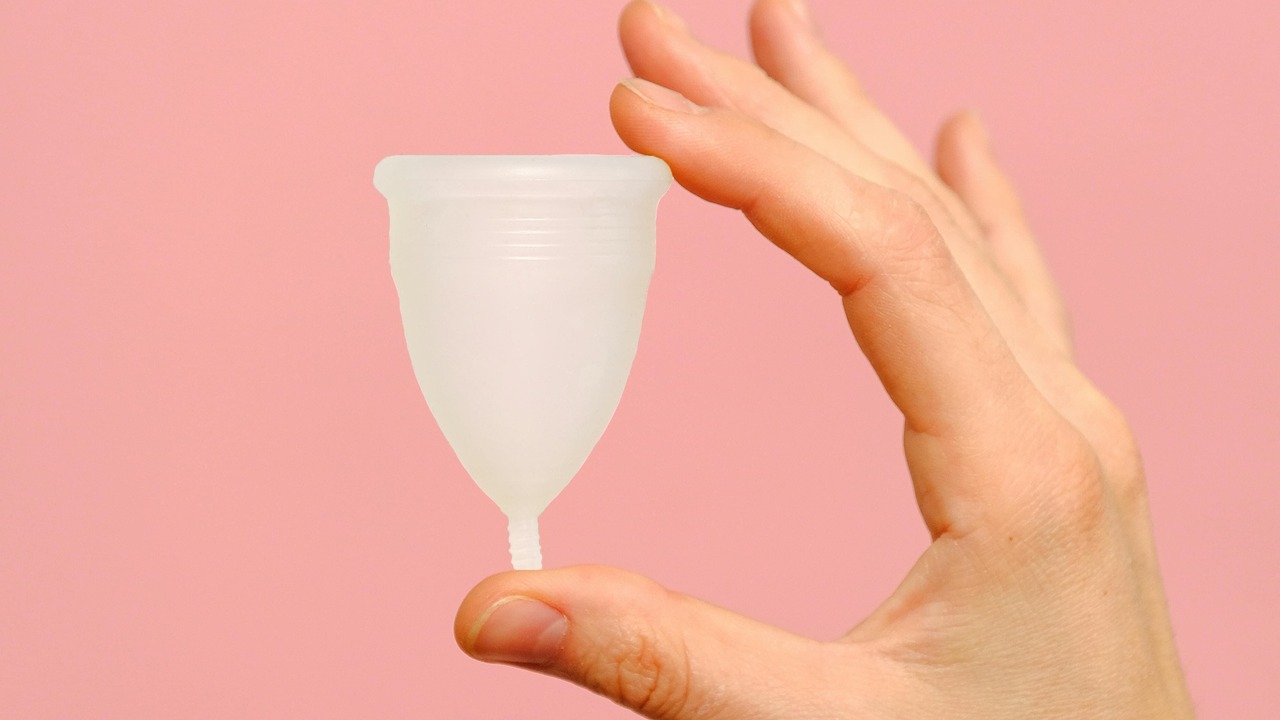
What is a menstrual cup?
A menstrual cup is a bell-shaped device made of silicone or medical-grade. It is inserted into the vagina to collect blood during menstruation.
Benefits of menstrual cup
- Menstrual cups are more sustainable for the environment as they are reusable, unlike the disposable sanitary pads and tampons which lead to a buildup of plastic waste. The same cup can be used for up to 10 years if maintained properly.
- Menstrual cups are cost-efficient in the long run as one would not have to repeatedly purchase disposable products for every cycle.
- A menstrual cup can be used for up to 12 hours depending on your flow, meaning less frequent changes.
- Like tampons, menstrual cups are also suitable for athletic activities.
- There is no risk of foul odour since the menstrual cup’s contents are not exposed to the air.
Can I use a Menstrual Cup?
- Anyone on their period can use menstrual cups, irrespective of age, flow and sexual activity.
- You can take our Menstrual Cup Quiz to find the right cup size for you.
Menstrual Cups are not suitable for:
- IUD users, as there is a risk of the device falling out due to the suction created by the cups.
- Those without access to resources to properly clean and sterilise the menstrual cup.
- Those with a dropped/prolapsed uterus as the cup may not be as secure.
Also read - Menstrual cup side effects
Pricing compared to sanitary pads
In the short-term, a single menstrual cup is more expensive than a pack of pads. However, if the same menstrual cup is used throughout multiple cycles, one can end up saving a lot of money in the long-term.
Are Menstrual Cups easy to use?
There is a learning curve when starting to use menstrual cups and it may take a few cycles for one to get used to correctly inserting and removing the cup. Once this is familiar, a menstrual cup is relatively easy to use, as it is a leak-proof device and is easy to clean as well.
To use a menstrual cup, wash your hands and sit in a comfortable position. Pinch the cup with your fingers and insert it into your vagina. It helps if your muscles are relaxed. If the cup is correctly inserted, you shouldn’t feel any pain or discomfort.
Also read - menstrual cup guide
Are Menstrual Cups better than Sanitary Pads?
Menstrual cups have advantages over pads in terms of sustainability, cost-effectiveness and prevention against infections. However, sanitary pads are more convenient to use in public spaces as one may not be able to clean a menstrual cup outside the house.
Availability of menstrual cup
Menstrual cups are easily available to purchase online, but may not be as accessible as sanitary pads. One may not find menstrual cups at their local medical stores.
Cambio’s Menstrual Cups are made of medical-grade silicone, ensuring their durability and reusability for up to 10 years. They are safe for first-time users and are available in different sizes to suit your body and your flow.
Also read - Does a menstrual cup break the hymen?
What are some other alternatives to Sanitary Pads?
Cloth pads - Alternate options of sanitary pads
A cloth pad is a reusable sanitary pad made of natural fibres like cotton or hemp. Its usage is very similar to the way one uses a disposable pad.
Cloth pads are as easy and convenient to use as disposable pads, and are claimed to be more comfortable. The main challenge with cloth pads is their cleaning and maintenance. Most cloth pad users tend to keep more cloth pads than they’d use per cycle to avoid having to rush through the cleaning process in the middle of their cycle.
Many cloth pad users have even made their own at home using skin-friendly absorbent materials like cotton, hemp and bamboo fabric. By making your own period products, you can bring along extra ones to have in handy when out in public.
Menstrual discs
Menstrual discs are similar to menstrual cups in that they are also inserted into the vagina to collect blood. They are placed deeper into the vaginal canal. There is also a learning curve when using menstrual discs for the first time.
Most menstrual discs are not reusable, meaning they are not as eco-friendly as reusable period products and can be expensive in the long run.
Period underwear
Period underwear is a relatively new alternative period product that resembles regular underwear with an additional absorbent layer to soak up menstrual blood.
These are available in different styles, colours and absorbency options for optimum comfort and utility, especially for overnight usage.
While period underwear is more expensive than other period products, it serves the dual functions of underwear and menstrual hygiene products combined. As they can be reused, the cost per use decreases the longer you use them.
Period underwear is recommended for those who dislike the feel of other period products inside their underwear.
The major inconvenience with period underwear is having to change them when outside the house. This is why many period underwear users also carry other menstrual hygiene products with them just in case.
Menstrual sponges
A menstrual sponge is either a part of a sea-sponge or a synthetic sponge used to soak up menstrual blood. They are similar to tampons without applicators or a string.
Are menstrual sponges safe?
According to the FDA and many renowned gynaecologists, the risks associated with menstrual sponge use outweigh the benefits.
There is a significant risk of TSS and other infections when using sea sponges. Sea sponges also have to be cleaned thoroughly as they can carry sand or other dirt. Their natural rough texture may cause irritation and even scratches inside the body.
Thus it is not recommended to use sea sponges as a menstrual hygiene product.
Alternatives of Sanitary Pads for Emergencies
Toilet Paper Emergency Pad
In extreme situations where you have no access to a sanitary pad, you can use a makeshift pad out of toilet paper, which is easily available across public washrooms.
Make sure to use clean toilet paper. Insert multiple layers into your underwear depending on your flow and wear it like a pad.
This can soak up your blood for a few hours at maximum and you should use this time to get access to the period product of your choice immediately.
Cotton Ball / Cotton Wool Pad
As cotton is a highly absorbent material, it can also be used in extreme situations together with toilet paper.
By wrapping up some cotton wool or cotton balls with toilet paper, and giving it a pad-like shape, you can insert this makeshift pad into your underwear until you find an actual period product.
It is important to wrap the cotton in a layer of toilet paper or tissues to avoid the fibres getting caught in your vagina.
Conclusion - Alternative of sanitary pads
There are many alternatives to sanitary pads that are widely available. Some can be purchased, while others can be made at home, the DIY way.
Getting comfortable with an alternative period product can take time, so allow yourself a few cycles to adjust to the alternative and see if it works for you.
Remember, you can always use multiple period products during the same cycle to add convenience depending on the situation. Using a thin pad or a panty liner is recommended when using a menstrual cup or disc for the first time.
Using a mix of period products, some disposable, some reusable, can significantly reduce the waste produced after every cycle.
More to read
Can sanitary pads cause rashes?

